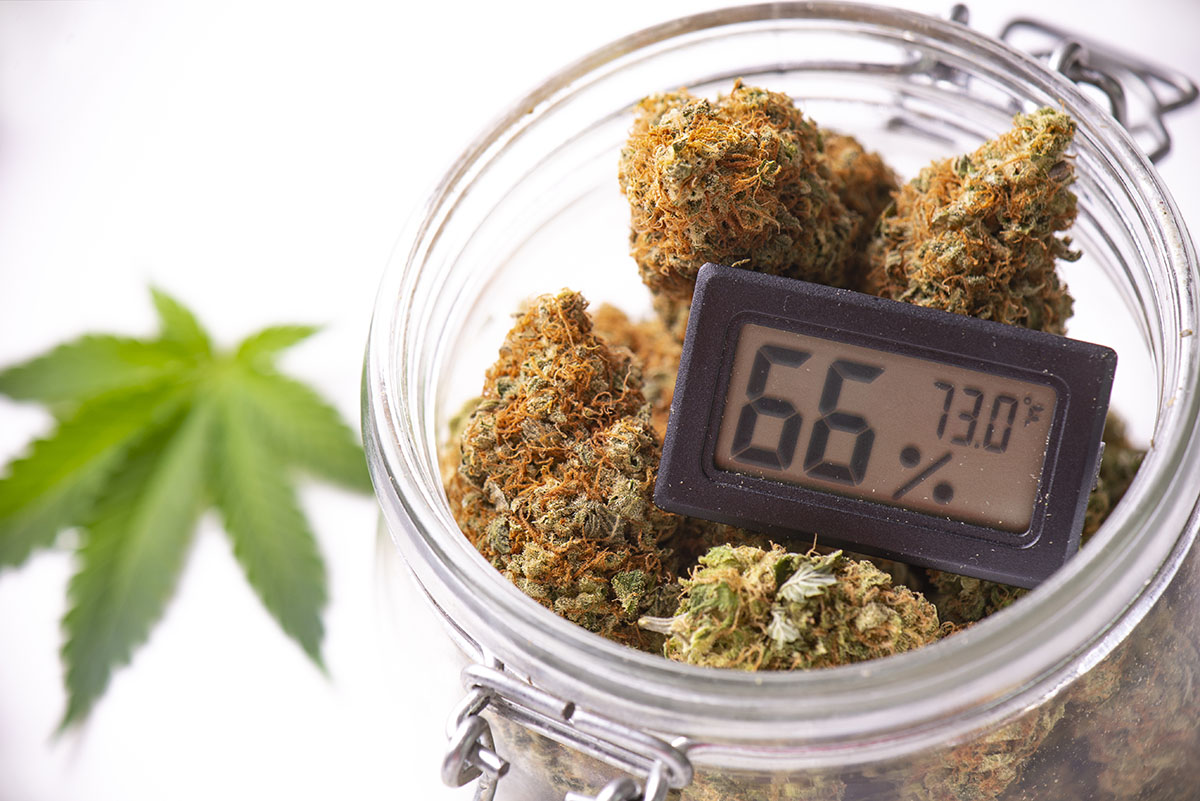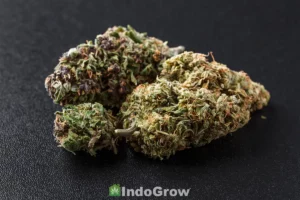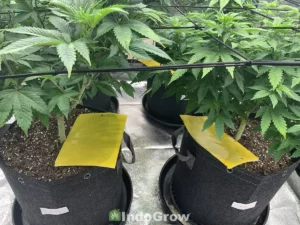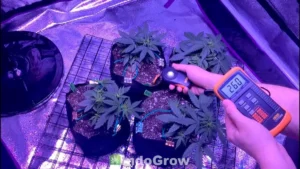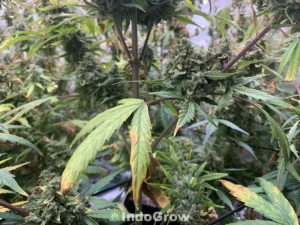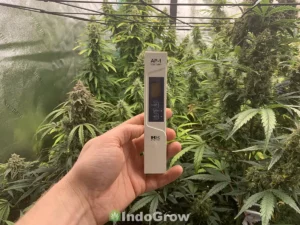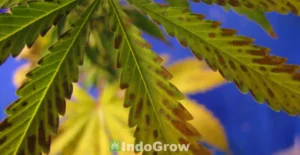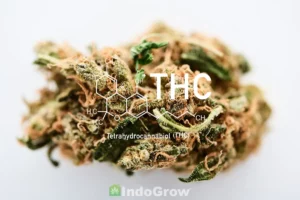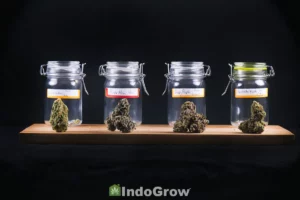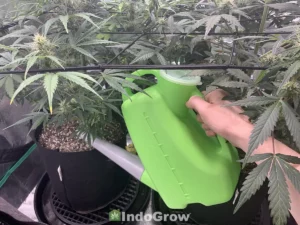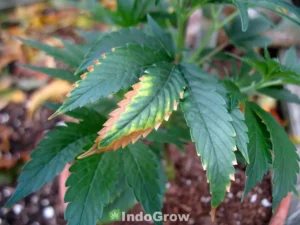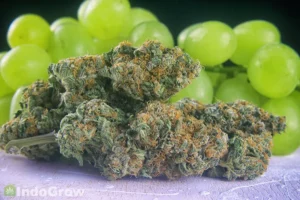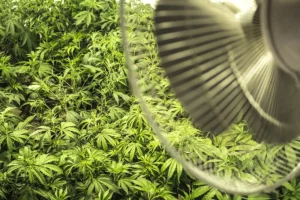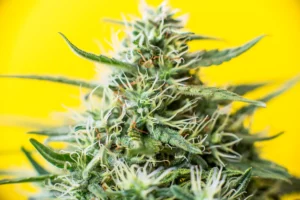Humidity is an important environmental factor for cannabis plants, and keeping them at the best humidity for weed can make the difference between a failed crop and a large harvest. While young plants need very high humidity levels to grow, older plants need far less humidity. Improper humidity can cause a range of health issues in cannabis plants, including stunted growth, poor nutrient uptake, fungal infections, and more.
This article will discuss the ideal humidity range for weed from seedling to harvest and beyond, and give you helpful tips on how to control humidity for both live plants and harvested weed.
Table of Contents
- Why Humidity is Important for Cannabis
- How to Increase Humidity in a Grow Tent
- How to Decrease Humidity in a Grow Tent
- Best Humidity for Growing Weed
- Best Humidity for Weed Germination
- Best Humidity for Seedlings
- Best Humidity for Vegetative Stage
- Best Humidity for Flowering Stage
- Best Humidity for Drying Weed
- Best Humidity for Curing Weed
- Best Humidity for Storing Weed
- Best Humidity Packs for Weed
- Summary
Why Humidity is Important for Cannabis
Proper humidity is very important to the health of your cannabis plants. Too little humidity will cause your plants to dry out and become stunted, while too much humidity can leave them susceptible to root rot or fungal infections. Monitoring and regulating the humidity at each life stage will ensure that your plant remains healthy and robust.
After harvest, humidity is still an important consideration. Keeping the humidity at a moderate, stable level will help your weed dry and cure at the correct pace, and decrease the risk of bud rot. Weed stored at a stable, moderate humidity will last longer and have a better flavor.
How to Increase Humidity in a Grow Tent
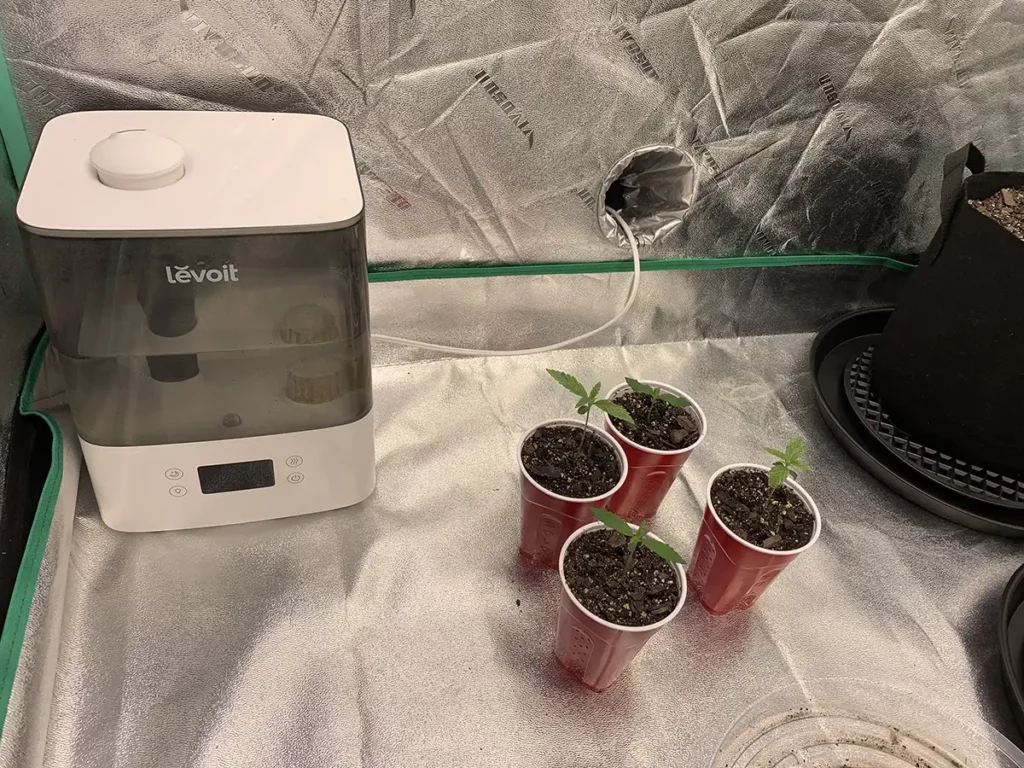
The simplest way to increase humidity in your grow tent is to install a humidifier. Be sure to purchase one with a sufficiently large reservoir so that you will not need to fill the humidifier more than once per day. Automatic humidifiers are a safer choice than manual, since they will automatically turn themselves off or back on to keep the room at a stable humidity of your choosing.
If you need to raise the humidity quickly, consider setting out damp towels or bowls of water. While this method is less efficient than using a humidifier, it can work in a pinch. Misting your plants with a spray bottle can also temporarily increase their humidity, especially for smaller plants.
How to Decrease Humidity in a Grow Tent
If humidity is too high, try running a dehumidifier outside of the tent. Most quality dehumidifiers will be too large and powerful to run inside of the tent. Choose a dehumidifier with a large reservoir, or one with a hose attachment to drain water into a bucket.
Do not water your plants with the water that comes out of the dehumidifier, especially if it goes into an open bucket. The water will not have the proper pH and mineral composition for cannabis plants, and it may become contaminated with algae or bacteria if it is left to sit out for days.
Increasing the rate of air exchange in your grow tent is another way to lower the humidity, especially if the air outside the tent is considerably dryer.
Best Humidity for Growing Weed
The ideal humidity for marijuana plants changes as they grow, with younger plants needing much higher humidity than older plants. In order to create the ideal humidity conditions for your cannabis, you must first understand what relative humidity is, and how it is affected by temperatures.
The moisture content of air can be measured using either absolute or relative humidity. Absolute humidity is the total amount of water vapor in the air, while relative humidity is expressed as a percentage of the maximum humidity that could be in the air.
Warm air can hold more total moisture than cool air. This means that rapid increases in temperature will lead to rapid decreases in relative humidity and vice versa, even though the total amount of moisture in the air remains the same.
For this reason, it is important to pay attention to recommended temperatures as well, since a relative humidity of 50% at 90F is actually far wetter than a relative humidity of 50% at 70F. To ensure your humidity is within recommended range, be sure to keep both a thermometer and a hygrometer in your grow tent to monitor the humidity and temperature levels simultaneously.
Best Humidity for Weed Germination
Seeds can be exposed to extremely high levels of humidity during germination, around 80-90%. This is often achieved by placing them in between damp paper towels or in moistened soil, then putting a clear plastic lid over top to lock in moisture. Once a sprout emerges from the seed, usually within 2-10 days, you can move on to the seedling care guidelines below.
Best Humidity for Seedlings
Seedlings and unrooted clones need high humidity to thrive. Since their root systems are not yet fully formed, much of a seedling’s water is actually taken in by the leaves instead of the roots.
Seedlings prefer humidity levels of 65-70%, while clones prefer an even higher humidity of 70-80%. Air temperatures should be between 68-77F, with a 7-9 degree drop at night.
Growers often use a clear plastic dome to trap humidity, which can be removed once the seedlings have grown their first true leaves. A heating pad can also help keep soil temperatures warm and consistent, speeding up germination.
Best Humidity for Vegetative Stage
During the vegetative phase, the weed plant will develop a more robust root system and begin taking most of its water from its growing medium. Relative humidity can be lowered by 5% per week until it is within the range of 40-60%. Humidity values above 70% can slow growth and cause mold to develop, while values below 30% can cause your plants to stop growing entirely.
Temperatures should also rise during this time to between 72-82F during the day, and a few degrees cooler at night. Be careful to raise the temperature and lower the humidity slowly to avoid shocking your young plants.
Best Humidity for Flowering Stage
During the flowering stage, humidity should once again be lowered slowly until it reaches 30-50%. Temperatures should also be lowered slightly to between 68-78F.
Relatively dry, temperate conditions are essential to proper flower growth. Never allow the humidity to reach above 60% during the flowering period, as bud rot can quickly set in at high humidity levels.
While cannabis plants do enjoy small temperature dips at night, do not let temperatures fluctuate too dramatically, as this can bring humidity into unhealthy levels. Since cool air holds less water than hot air, sudden drops in temperature can cause humidity spikes that are disastrous to flowers, particularly if dew forms on them overnight.
Best Humidity for Drying Weed
During the drying stage, cannabis plants are cut down, trimmed, and hung up to dry. Humidity levels should be raised to 55-65%, and temperatures should be lowered to 60-70F.
While it might seem counterintuitive to raise the humidity during drying, moderate humidity levels dry the weed at a slow, even pace. Weed that is dried too quickly can be harsher, more brittle, and less potent than weed which is given more time to dry gradually.
The weed is finished drying when the stems snap easily, but the buds are still somewhat spongy and flexible. This process usually takes between 2-4 weeks.
Best Humidity for Curing Weed
After drying, the buds are moved into glass jars for storage and curing. Ideal humidity in the jars is between 55-65% humidity, which can be controlled through the use of humidity packs, such as Boveda humidity packs. Jars should also be shaken lightly and opened each day to allow for fresh air exchange.
If your weed is overly humid, the lid of the jar can be left off for a few hours. If it is too dry, additional humidity packs can be added. Also consider checking that you are using an airtight container with a proper seal. Ziplock bags and low quality jars will let in air and dry your weed out over time.
Best Humidity for Storing Weed
Once the curing process is finished, you can continue to store your weed in a cool, dark place for up to two years. The weed should be kept at room temperature in an airtight container. Keeping at least one humidity pack in with the weed will help it stay between 55-65% humidity.
Try to keep the lid of your jar closed whenever you are not using it. Once curing is complete, the weed no longer needs daily burping, so occasional opening to remove buds will provide plenty of air exchange.
Best Humidity Packs for Weed
Boveda produces some of the best humidity packets for weed on the market, with terpene shield technology to protect the flavor and potency of your buds. They offer a classic 62% humidity pack, as well as a 58% humidity pack for those that prefer slightly dryer buds. Boveda humidity packs also come in a wide range of sizes for preserving anything from an ⅛ of cannabis to multiple pounds of buds.
Summary
As seedlings, cannabis plants must collect all of their moisture from the air, so providing them with high humidity is essential to their survival. As the plants mature into the vegetative stage, their humidity can be lowered and their temperature increased. Finally, during the flowering stage, cannabis plants prefer to be kept dry to protect their dense flower buds from mold.
After harvest, you will move on to drying and curing your buds. Throughout this process, humidity should be kept stable between 55-65%. Drying and curing in moderate humidity allows the buds to dry slowly and preserve as much flavor and potency as possible. When storing cannabis, Boveda humidity packs are an excellent way to maintain stable humidity and keep your buds fresh for months or years to come.
To learn more, check out the Best Temperature for Weed.

Rocky Horton
Author
Rocky Horton is an experienced cannabis grower and the founder of IndoGrow. The IndoGrow editorial team has over four decades of combined growing experience. Learn more.

